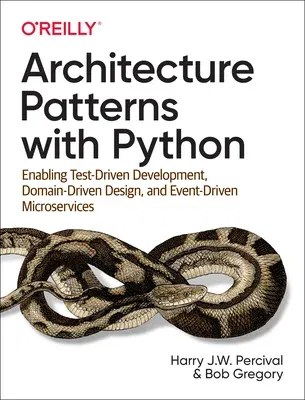Harry Percival
(Author)Architecture Patterns with Python: Enabling Test-Driven Development, Domain-Driven Design, and Event-Driven MicroservicesPaperback, 14 April 2020

Qty
1
Turbo
Ships in 2 - 3 days
In Stock
Free Delivery
Cash on Delivery
15 Days
Free Returns
Secure Checkout

Print Length
301 pages
Language
English
Publisher
O'Reilly Media
Date Published
14 Apr 2020
ISBN-10
1492052205
ISBN-13
9781492052203
Description
Product Details
Authors:
Book Format:
Paperback
Country of Origin:
US
Date Published:
14 April 2020
Dimensions:
23.34 x
17.78 x
1.63 cm
ISBN-10:
1492052205
ISBN-13:
9781492052203
Language:
English
Pages:
301
Publisher:
Weight:
485.34 gm